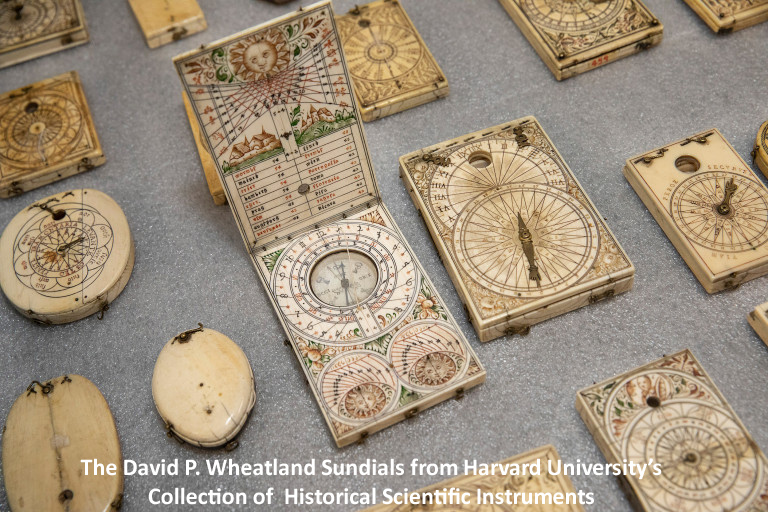 From the Harvard Gazette - Dec 9, 2019 : "Since 1672 Harvard University has been acquiring scientific instruments for teaching and research. In 1948 the Collection of Historical Scientific Instruments was established...[and has] grown to more than 20,000 objects making it one of the three largest university collections of its kind in the world"
From the Harvard Gazette - Dec 9, 2019 : "Since 1672 Harvard University has been acquiring scientific instruments for teaching and research. In 1948 the Collection of Historical Scientific Instruments was established...[and has] grown to more than 20,000 objects making it one of the three largest university collections of its kind in the world"
As an illustration of the collection is a photograph of ivory pocket sundials shown here, made in Nuremberg, Germany between 1575 and 1645. These elegant diptych sundials represented the 16th and 17th century equivalent of pocket watches, especially for wealthy traveling merchants to keep track of time. "Harvard has the largest collection of sundials in North America, a gift of David P. Wheatland, Class of 1922."
As described by Dr. Sara Schechner in Time of Our Lives - Sundials of the Adler Planetarium who is the David P. Wheatland Curator of Historical Instruments at Harvard describes the diptych as "fashioned from ivory, gilt brass, carved wood, and wood covered by printed paper. The materials offer hints on the social status of their owners. So too do common and novel accessories found on the instruments. A directory of cities and their latitudes suggests an owner who traveled... The association is stronger when the diptych combines a gazetteer with particular sundials that found the time according to the sundry conventions of England, France, Germany, and Italy. A merchant crossing a border would have needed to know how to set up an appointment with his clients. How many hours would there be to transact business or to journey along the road? Calendrical devices on the diptych showed him the length of the day and night throughout the year...[and] the diptych's lunar volvelle gave ...the moon's phase. It also assisted the owner in finding the time by moonlight...[And] a diptych with a magnetic compass [allowed proper and immediate orienting the sundial]."
Read more at: https://news.harvard.edu/gazette/story/2019/12/collection-of-historical-scientific-instruments-continues-to-amaze/
